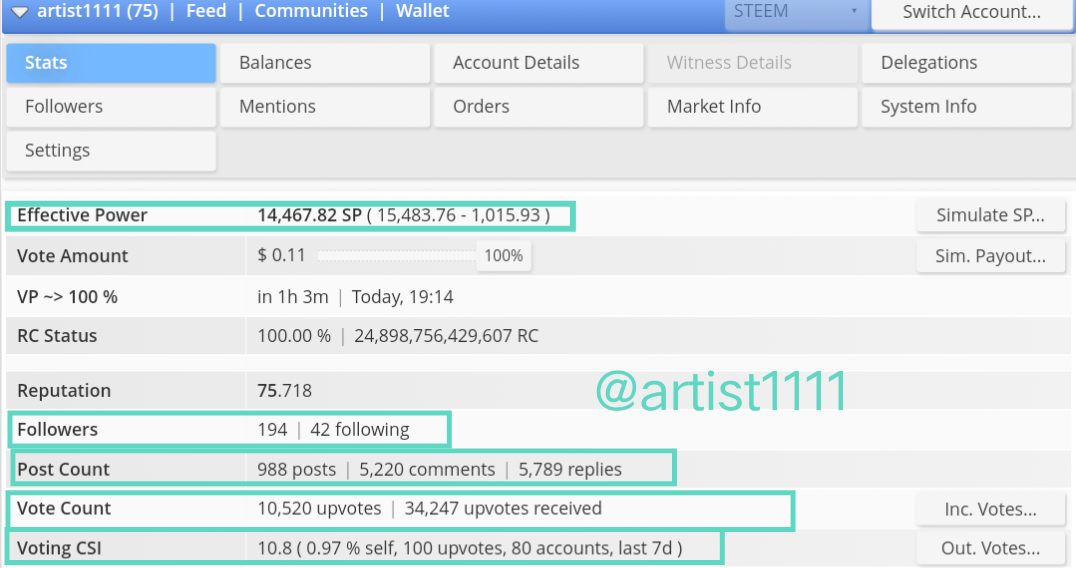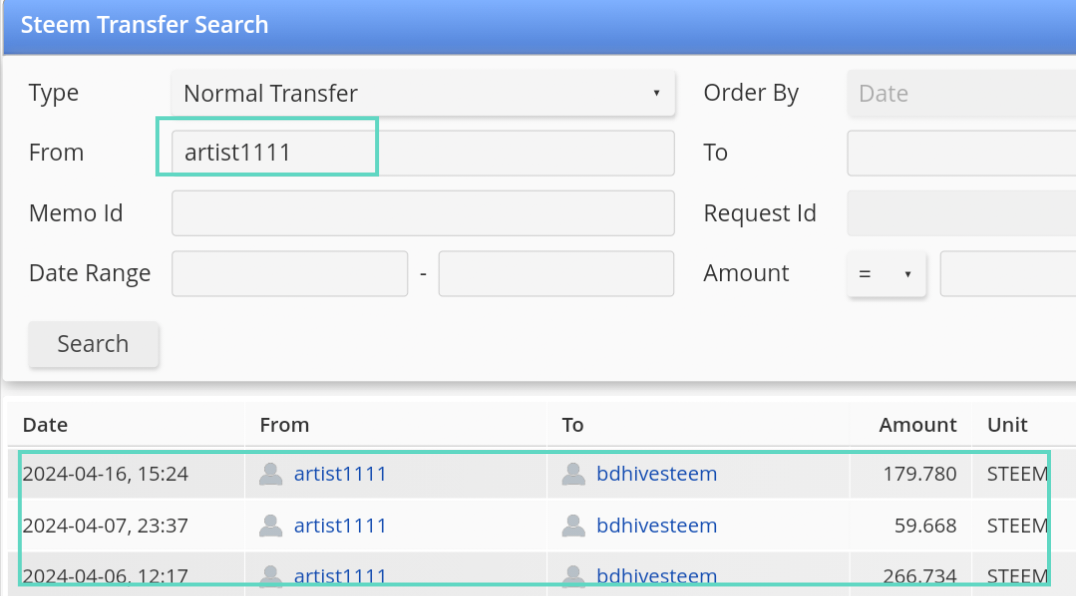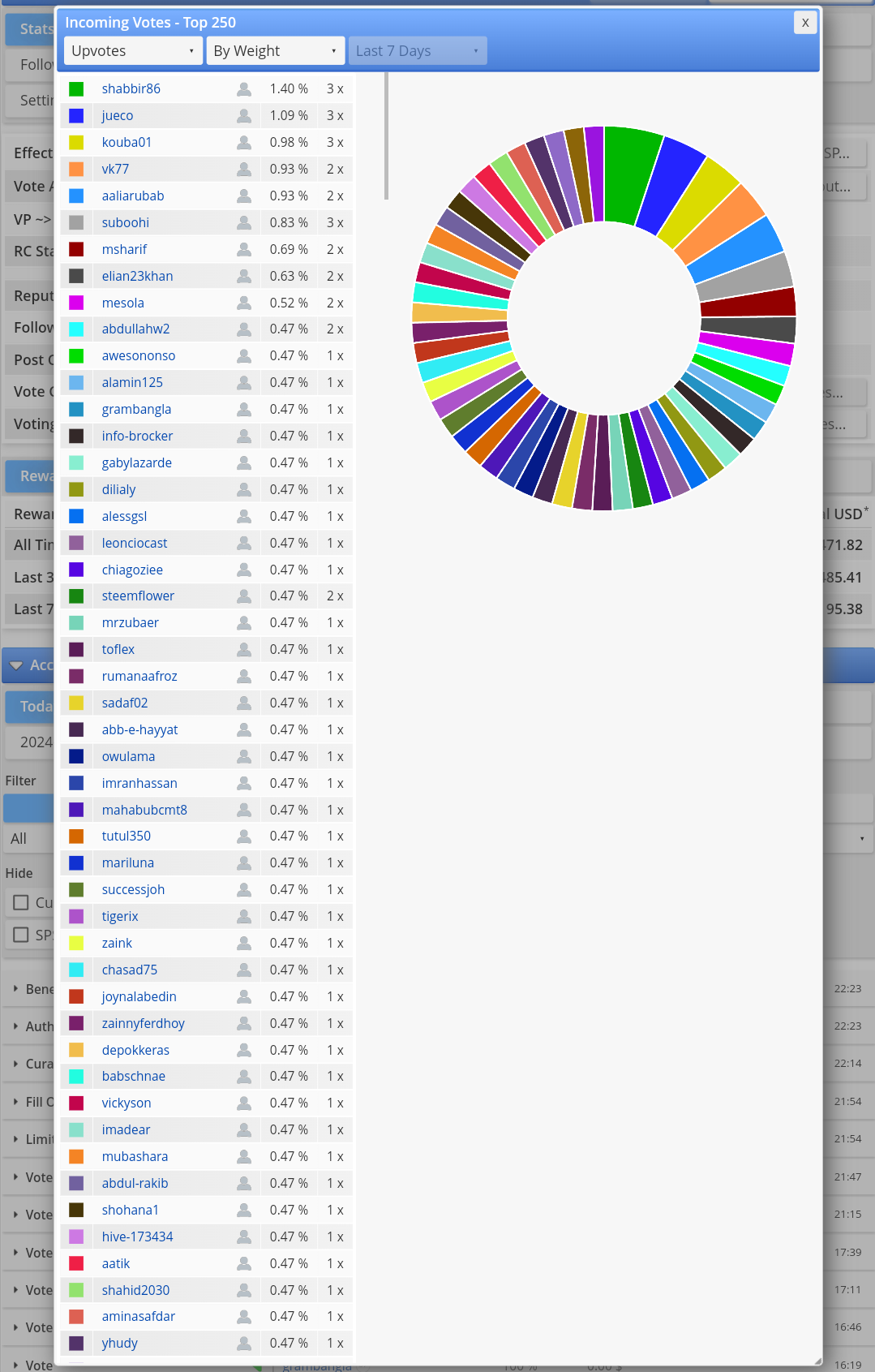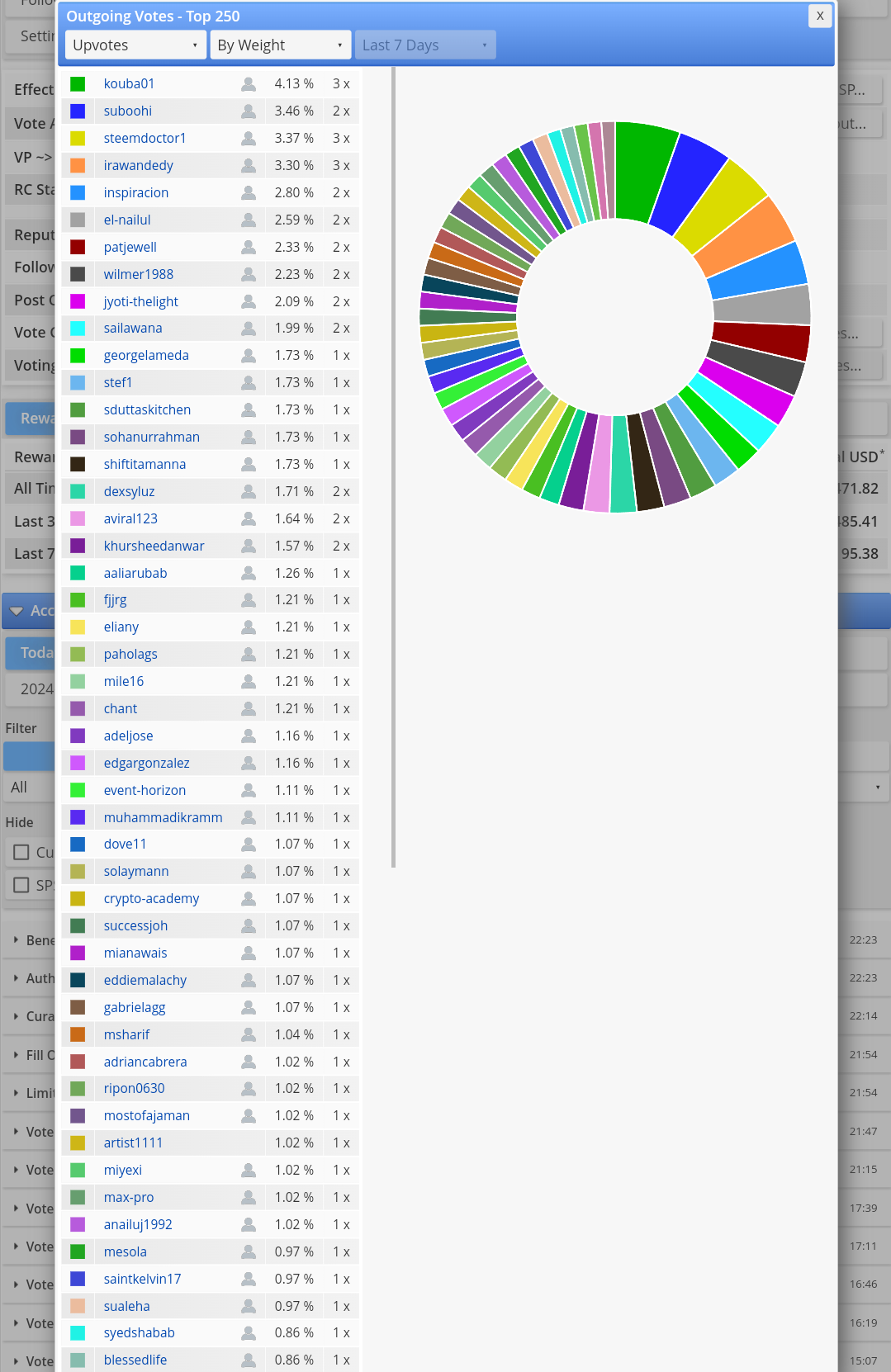SEC-S17/W3 | Onchain Metrics of Steem blockchain
10 comments

Hello everyone! I hope you are all doing well and enjoying life with the blessings of Allah Almighty. I am happy to take part in the exciting challenge hosted by SteemitCryptoAcademy community . So, without any further delay, let's dive right in! Shall we ? ........, Okay , Okay😊! .
We are going to get very specific about user behavior on the Steem blockchain in this lecture. In order to comprehend how users are interacting with the platform, we will be investigating the following important on-chain metrics:
Posts
This measure keeps track of how many posts a user shares on Steem, which helps us understand how frequently they contribute to the community. Comparable to keeping track of how often someone participates in a group discussion.
Comments
Keeping tabs on comments lets us see how often users participate in discussions or interact with others' posts. It's a way to gauge how engaged they are within the community, like noting how much someone joins in conversations at a party.
Upvotes
Upvotes signal approval and appreciation for content, showing support from other users. By tallying upvotes, we can see how much recognition a user receives for their contributions, akin to counting the number of pats on the back someone gets for a job well done.
Downvotes
Conversely, downvotes indicate dissatisfaction with content. They're like thumbs-downs, showing disapproval or disagreement with what's being shared.
Transfers:
This metric tracks the movement of Steem and SBD between users and platforms, revealing the flow of value and transactions on the blockchain. It's like keeping tabs on who's passing money or goods around at a party.
Followers
A user's follower count shows the amount of people who share an interest in following their posts and updates. It's similar to measuring the number of pals who attend an event and wish to maintain contact. You may explore Steemworld and look through the account statistics area to find all these metrics.
You may see a detailed overview of how users are interacting with the platform and one another there. It functions similarly to an online the dashboard for keeping an eye on the Steem community's pulse.
 SteemWorld.org SteemWorld.org |
|---|
 SteemWorld SteemWorld |
|---|
Investigate the many SteemWorld interfaces to discover a multitude of information, such as transfers, posts, upvotes, and downvotes.
These stats provide a thorough overview of user involvement and activity on the Steem blockchain. SteemWorld offers a centralized platform for tracking the pulse of the Steem community, whether you're tracking support for content through upvotes, opposition through downvotes, or the flow of value through transfers.
Like treasure maps, on-chain matrices—like the ones you see on SteemWorld—allow us to better understand how users are utilizing the Steem blockchain.
Think of it as a scrapbook of memories that you can flip through to see how things have evolved over time. Users' level of activity and involvement in the Steem community is depicted by these metrics, which include posts, transfers, downvotes, and upvotes.
 |  |
|---|
We may go further into these analytics using resources like SteemWorld to observe trends over time. It's similar to focusing in on a timeline to observe how events have changed over time. It's like watching a flower bloom and seeing how it grows over the seasons.
For instance, we can monitor the quantity of postings and comments over a period of weeks or months to determine whether activity peaked on particular occasions or trends.
It's similar to watching the waves at the beach, which can be serene at times or raging with energy at others. Analyzing upvotes and downvotes can also help us determine which content is well-received by the community and which is not.
It signals what is and is not popular, just like when we hear cheers or jeers at a concert. Additionally essential to comprehending the flow of value throughout the Steem ecosystem is transfer statistics.
We are able to observe where the action is taking place and how it is evolving over time by monitoring the movement of Steem and SBD between users and platforms. It's similar to trying to figure out where a trail of breadcrumbs leads.
This aids in our comprehension of both user interaction and community economic activity. Overall, we can learn a great deal about the trends in user involvement and the evolution of the community over time by utilizing tools like SteemWorld to analyze on-chain metrics data from the Steem blockchain.
Like removing the layers of an onion to disclose its inner workings, it enables us to make well-informed decisions and influence how the Steem ecosystem develops in the future.
On chain matrices, such as those seen on Steem, it can occasionally be comparable to piecing together a puzzle with missing parts. This is due to the unique operating mechanism of the Steem blockchain, which functions akin to a code that requires deciphering. Even though these measures might reveal a lot about the community's activities, interpreting them can provide some unique difficulties.
Complex Social Structure:
The distinctive social structure of Steem presents one difficulty. In addition to being a standard social network, it allows users to receive cryptocurrency incentives for their contributions. Because of this, analyzing on-chain metrics becomes more difficult because people may act differently when money is involved. It's similar to attempting to comprehend the dynamics of a group where each member has a distinct goal and set of incentives.
Incentives and Motivations:
Understanding the motivations and incentives behind user behavior presents another difficulty. Users on Steem have the opportunity to earn incentives through upvotes, and this has an impact on the kind of content they produce and interact with. This implies that not all behavior on the platform might be motivated by sincere involvement or curiosity. It's similar to attempting to determine whether someone is being kind to you out of true affection or out of a desire for reciprocation.
Data Accuracy and Transparency:
The final concern is the transparency and accuracy of the data. On-chain measurements can offer insightful information, but they're not always transparent or 100% correct. Data manipulation and misrepresentation can occasionally occur, making it challenging to obtain a clear picture of the true situation. It's similar to attempting to read a book with words crossed out or pages missing; you can still make out the general plot, but it's incomplete.
On chain indicators, such as those found on Steem, can function as a kind of platform health examination. They assist us in determining whether everything is operating smoothly and how the community is doing. We can determine the general health of the Steem ecosystem by examining particular factors like as reward fairness, diversity of content, and voting power distribution.
Distribution of Voting Powers:
How users' voting power is divided is an important factor to take into account. This indicates who is most powerful on the platform and if authority is dispersed equally among many people or concentrated in the hands of a select few. An excessive concentration of voting power may result in an unjust and unequal reward structure. It's similar to ensuring that everyone has an equal voice in a decision made by the group as opposed to allowing one individual to make all the decisions.
Content Diversity:
The variety of material being posted on Steem is another important component. A diverse range of topics and viewpoints that accommodate various interests and preferences should be present in a healthy ecosystem. We can determine whether there is sufficient diversity to maintain the community's engagement and growth by examining on-chain indicators pertaining to the kinds of material being posted and how they are being received. It's similar to making sure that there isn't just one kind of meal at a buffet but something for everyone.
Reward Fairness:
Finally, we should think at how evenly prizes are being given out on the platform. This entails examining the level of acknowledgement and payment users are getting for their contributions. Incentives that are biased in favor of particular individuals or kinds of material might incite animosity and deter other people from taking part. We can make sure that everyone has an equal opportunity to get rewards based on their contributions and efforts by using on-chain analytics to track reward distribution. It's similar to ensuring that everyone receives an equal portion of the pie as opposed to certain people receiving all of the pieces.
On-chain measurements give Steem blockchain engineers a very useful tool. It functions similarly to a map in helping you navigate the potential and difficulties of the platform. They can determine how to improve the platform's usability, draw in additional users, and manage growth without diluting its core by looking at these indicators.
On-chain data can be used by developers to learn how users engage with the platform and pinpoint areas in need of development. It's similar to hearing what consumers have to say to improve a product.
Developers can improve the usability and intuitiveness of the design and user experience by examining analytics pertaining to user activity, navigation patterns, and engagement levels.
Developers can also find ways to draw additional users to the platform by using on-chain metrics. It would be similar to taking the popular restaurant model and using it to explain Steem.
Developers are able to more efficiently target consumers with their outreach campaigns and marketing activities by examining analytics pertaining to user growth, referral sources, and conversion rates. Scalability becomes an issue as the Steem platform expands.
On-chain measurements can give important information about where bottlenecks might arise and how the platform is managing growing demand. It works similarly to tracking the flow of traffic on a highway to locate areas of congestion.
It works similarly to tracking the flow of traffic on a highway to locate areas of congestion. Developers may put solutions in place to optimize speed and guarantee a seamless user experience even as the platform expands up by examining KPIs linked to transaction volume, network activity, and resource utilization.
Lastly, on-chain measurements can be used by developers to maintain the integrity of the Steem community. It's similar to closely monitoring a neighborhood to keep everyone safe and deter crime.
Developers are able to detect and resolve problems like spam, manipulation, and abuse, guaranteeing that the platform stays an equitable and friendly place for all users, by keeping an eye on metrics pertaining to voting trends, content quality, and user interactions.
With Best Regards
@artist1111

Goodbye, friends. It's been a pleasure getting to know you all participating in this community. I will miss interacting with all of you, but it is time for me to move on. Take care & I hope to see you all again very soon , Best of Luck .
As the sun sets on the day
And the night falls softly in
We close this chapter, dear reader
But the story's not yet done
Tomorrow's pages wait, unwritten
INTRODUCTION
As the sun sets on the day
And the night falls softly in
We close this chapter, dear reader
But the story's not yet done
Tomorrow's pages wait, unwritten
INTRODUCTION
Comments